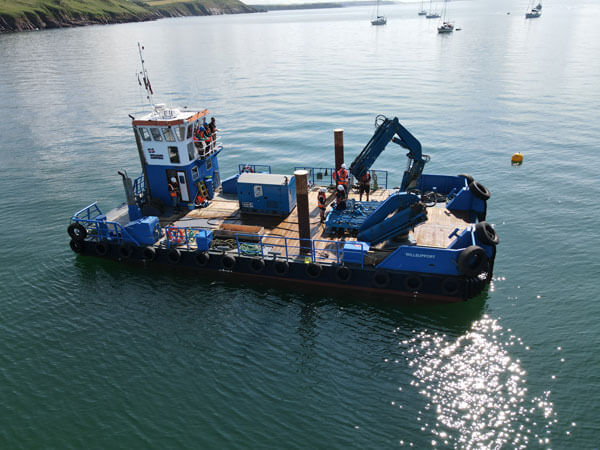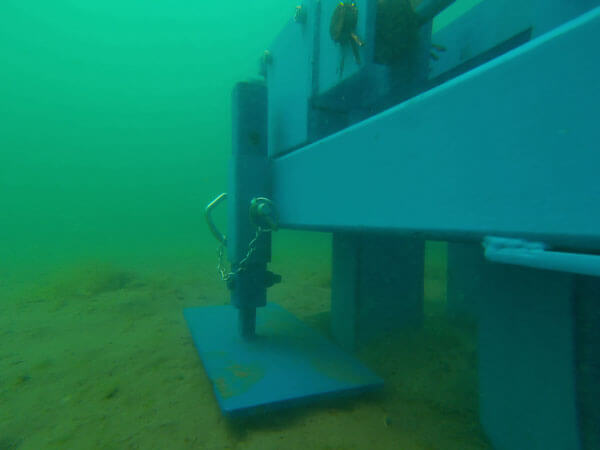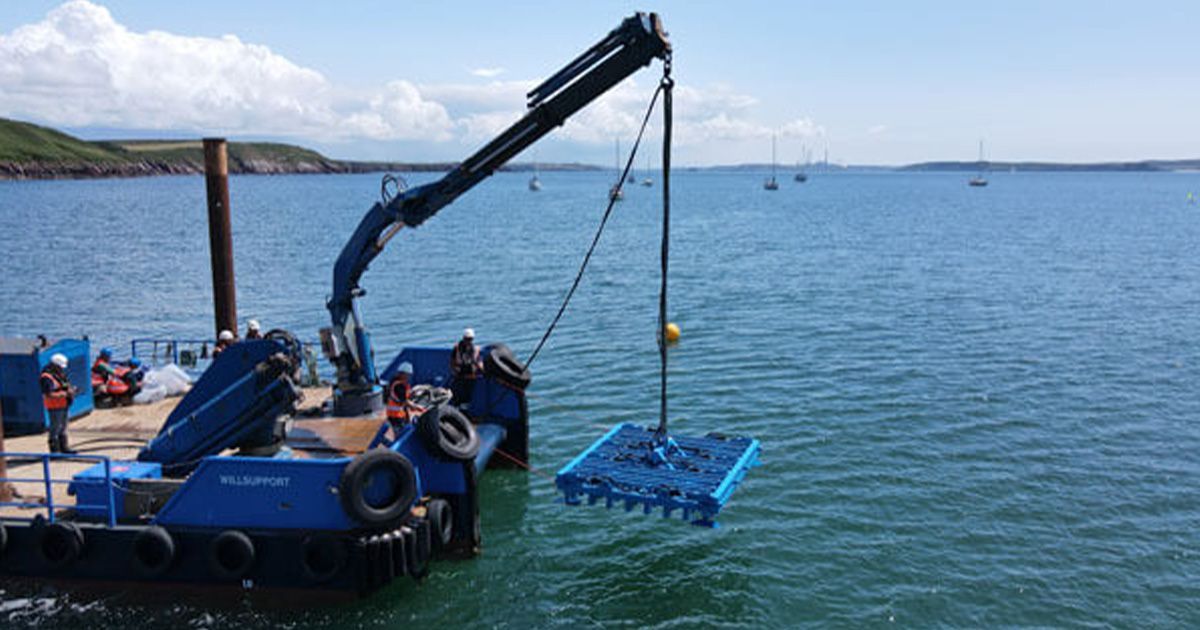Our Earth Change division is responsible for habitat restoration and high-value ecosystem creation using re-used soil and sediments on landfills and saltmarshes across the UK. Recently, it has been working alongside Project Seagrass and Swansea University to design, construct and test an innovative Automated Seagrass Planter, patent pending, which will revolutionize the large-scale planting of seagrass, offering new hope for the restoration and preservation of vital coastal ecosystems.
Our CEO, James Maclean, said: “We are now convinced we can substantially scale up seagrass glade restoration using the automated planter, taking conventional planting (done with divers on an individual seedling basis) to sea-scape scale planting at 1,000's of plants per day.”
What are the benefits of seagrass and how are they being impacted?
Seagrass meadows play a crucial role in maintaining healthy marine environments, fostering biodiversity, and mitigating climate change by capturing carbon dioxide from the atmosphere. Globally, seagrass has the capability to capture carbon faster than tropical rainforests, accounting for 10 to 18% of total ocean carbon storage, despite covering less than 0.1% of the seafloor.
 (Image credit: Land & Water Group)
(Image credit: Land & Water Group)
However, due to various human activities and natural disturbances, seagrass habitats have been rapidly declining worldwide. In the UK alone seagrass depletion since 1936 exceeds 30% of the areas of previous colonization.
How can we improve these ecosystems?
The Automated Seagrass Planter which has been developed represents a significant breakthrough in seagrass restoration efforts, aligning the use of biodegradable seedpods/hessian sacks developed by Project Seagrass with the installation innovation from Land & Water/Earth Change. This device streamlines and automates the process of seagrass planting, making large-scale restoration projects more efficient and achievable than ever before.
 (Image credit: Land & Water Group)
(Image credit: Land & Water Group)
What are the key features and benefits of the automated seagrass planter?
- Precision Planting: The ASP employs advanced technology to accurately place hessian sacks filled with sand and seeds in pre-assessed locations, ensuring optimal growth conditions and maximizing survival rates.
- It can work in subtidal and intertidal areas in water depths of up to 6 metres.
- Efficient Operation: The automated system significantly reduces the time and effort required for manual planting, enabling the execution of large-scale projects in a cost-effective and timely manner.
- Environmental Considerations: The ASP is designed to minimise environmental impact during the planting process. It ensures optimal spacing of seagrass plugs, reducing competition for resources and promoting healthy growth and global positioning technology to record the mosaic of juvenile habitats planted.
- Adaptability: The ASP can be easily adjusted to accommodate various seagrass species and local conditions, providing flexibility for restoration projects in diverse coastal environments.
The successful testing of the Automated Seagrass Planter has yielded promising planting results, demonstrating its effectiveness in enhancing seagrass restoration efforts. By enabling the rapid planting of seagrass at scale, this technology has the potential to rejuvenate degraded habitats, enhance coastal resilience, promote marine biodiversity, and provide substantial new habitats for carbon sequestration.



